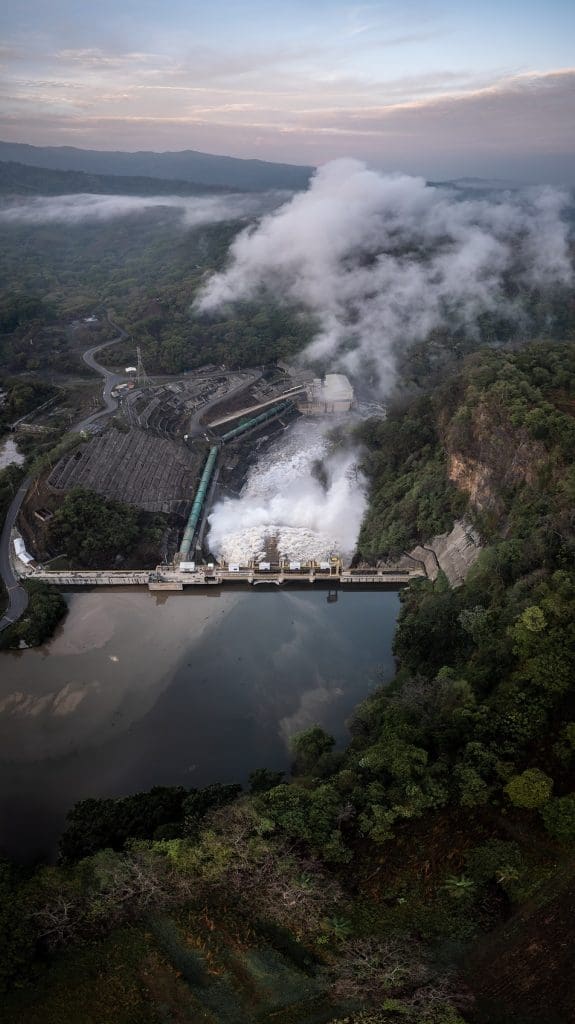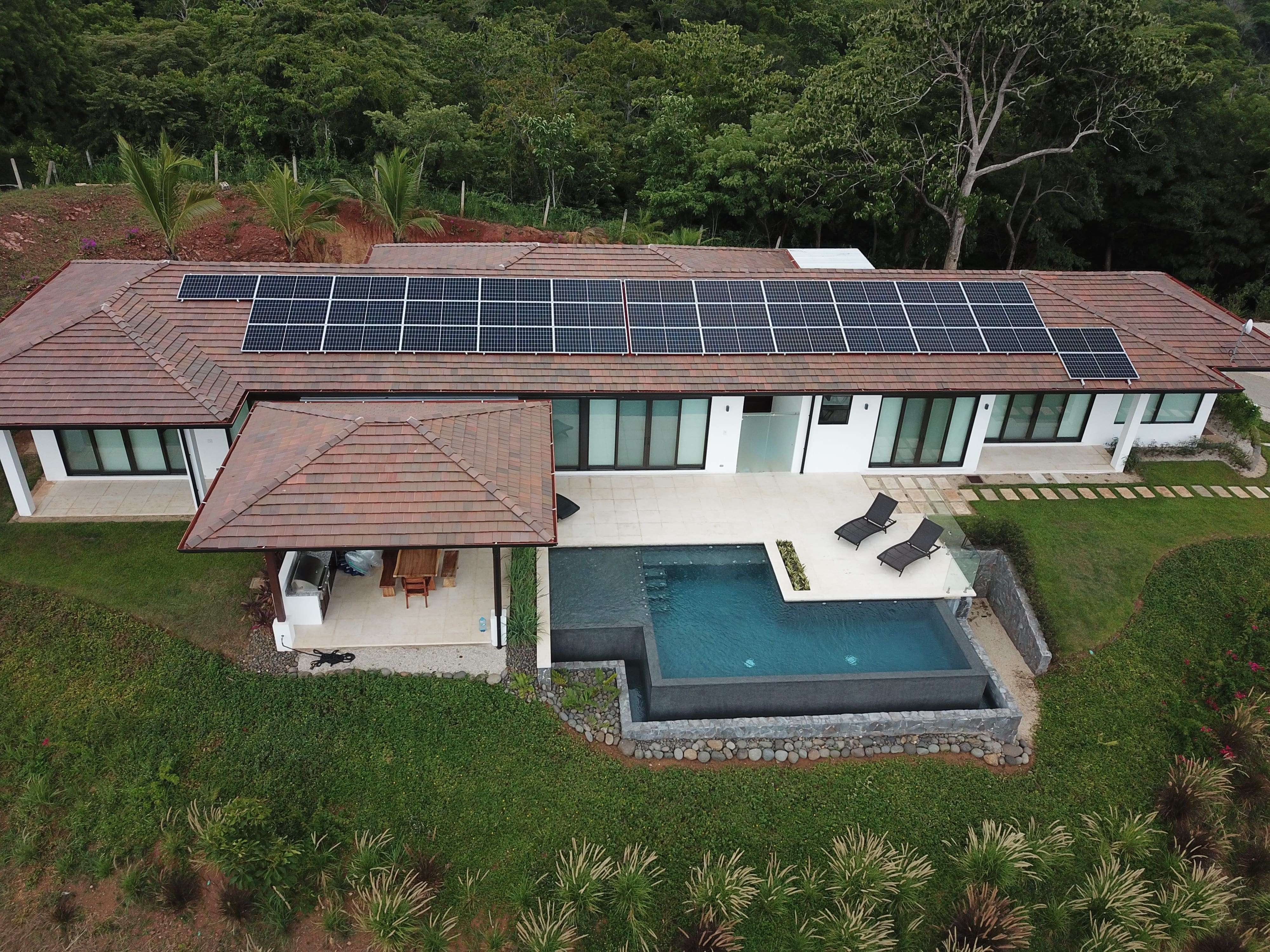
The Wind Farms of Costa Rica
Harnessing the power of wind energy has become a pivotal element in Costa Rica’s sustainable development journey. As a country known for its commitment to environmental conservation and renewable energy, Costa Rica has made significant strides in the establishment and growth of wind farms. This article delves into the intricate landscape of wind energy in Costa Rica, exploring the evolution of wind farm development, the environmental and economic implications, technological advancements, community engagements, governmental policies, and the future prospects for expanding this clean and renewable energy source in the country.

1st wind farm in the 1970’s. Photo by Andrea Sather King
Introduction to Wind Energy in Costa Rica
Costa Rica, known for its stunning landscapes and commitment to sustainability, has been harnessing the power of wind energy to meet its electricity needs. With a strong focus on renewable energy, the country has made significant strides in utilizing wind power as a clean and efficient energy source.
Overview of Renewable Energy Landscape in Costa Rica
Costa Rica boasts a renewable energy landscape that is the envy of many countries. With a goal to become carbon neutral by 2021, the country has heavily invested in renewable energy sources such as hydropower, geothermal, solar, and wind energy. Wind power plays a crucial role in diversifying Costa Rica’s energy mix and reducing its reliance on fossil fuels.
Importance of Wind Energy in the Country’s Energy Mix
Wind energy holds a special place in Costa Rica’s energy mix due to its ability to provide clean and sustainable electricity. By harnessing the power of wind, Costa Rica not only reduces its carbon footprint but also ensures a reliable and environmentally friendly source of energy for its citizens. Wind energy contributes to the country’s goal of achieving energy independence and promoting a greener future.
Development of Wind Farms in Costa Rica
Costa Rica’s journey towards adopting wind energy has been marked by early enthusiasm and rapid growth in wind farm projects across the country. The development of wind farms has been pivotal in meeting the rising energy demands of Costa Rica while staying true to its commitment to sustainability.
Early Adoption and Growth of Wind Energy Projects
Costa Rica embraced wind energy early on, recognizing its potential as a viable renewable energy source. The country witnessed a rapid growth in wind farm projects, with investments pouring in to harness the abundant wind resources along its coasts and highlands. This proactive approach has solidified Costa Rica’s position as a leader in renewable energy adoption.
Key Players in the Wind Energy Sector
The success of wind energy in Costa Rica can be attributed to the collaboration between government entities, private sector companies, and international organizations. Key players in the wind energy sector have played a vital role in developing and operating wind farms, ensuring efficient and sustainable energy production for the country.
Environmental Impact and Sustainability Practices
While wind energy offers numerous environmental benefits, it is essential to consider its impact on biodiversity and ecosystems. Costa Rica has been proactive in adopting sustainable practices in wind farm operations to mitigate any adverse effects on the environment.
Impact on Biodiversity and Ecosystems
The installation of wind farms can have localized impacts on wildlife and ecosystems. Costa Rica has taken measures to conduct thorough environmental assessments before the construction of wind farms to minimize disturbances to the natural habitats of flora and fauna. Efforts are also made to address any concerns related to migratory bird patterns and other wildlife considerations.
Adoption of Sustainable Practices in Wind Farm Operations
To ensure the long-term sustainability of wind energy production, Costa Rica has implemented strict guidelines for wind farm operations. From monitoring and managing noise levels to promoting responsible land use practices, sustainable initiatives are integrated into the day-to-day operations of wind farms. These efforts showcase Costa Rica’s commitment to balancing energy needs with environmental preservation.
Economic Benefits and Challenges
The deployment of wind energy in Costa Rica not only brings economic benefits such as job creation and economic growth but also poses challenges related to financing and cost management that need to be addressed for sustainable development.
Job Creation and Economic Growth
The establishment of wind farms in Costa Rica has paved the way for job creation and economic growth in local communities. From construction workers to maintenance technicians, the wind energy sector offers employment opportunities while stimulating economic development in the region. Additionally, revenue generated from wind energy projects contributes to the overall economic well-being of the country.
Challenges in Financing and Cost Management
Despite the economic benefits, challenges related to financing and cost management can pose obstacles to the widespread adoption of wind energy in Costa Rica. Securing funding for large-scale wind projects and managing operational costs efficiently are crucial factors that require attention to ensure the financial sustainability of wind energy initiatives. By addressing these challenges, Costa Rica can continue to harness the potential of wind energy for a prosperous and sustainable future.**Technological Advancements and Innovations**
Advances in Wind Turbine Technology:
Costa Rica’s wind farms are not just your average spinning wheels in the wind. They boast cutting-edge technology in the form of advanced wind turbine designs. These turbines are not only more efficient at converting wind energy into electricity but also sleek and impressive to look at. With innovations like larger rotor blades and better aerodynamics, these turbines are a testament to human ingenuity harnessing the power of nature.
***Integration of Smart Grids and Energy Storage Solutions:***
In the world of energy, being smart is the new cool. Costa Rica’s wind farms have embraced this mantra by integrating smart grid technology and energy storage solutions. This means that not only can the energy produced by the wind farms be efficiently distributed to where it’s needed most, but excess energy can also be stored for times when the wind isn’t blowing as strongly. It’s like having a backup plan for your backup plan, ensuring a steady and reliable power supply.
**Community Engagement and Social Impact**
***Local Participation in Wind Farm Development:***
When it comes to building wind farms in Costa Rica, the locals aren’t just bystanders – they’re active participants. From providing input on where to place the turbines to being involved in the construction process, community engagement is a key part of wind farm development. This not only fosters a sense of ownership and pride among the locals but also ensures that the wind farms are built in a way that benefits the community as a whole.
***Social Benefits and Challenges Faced by Communities:***
While wind farms bring undeniable benefits like clean energy and economic opportunities to local communities, they also come with their fair share of challenges. Issues like noise pollution, visual impact, and land use conflicts can arise, requiring careful consideration and mitigation efforts. By addressing these challenges head-on and maximizing the social benefits, Costa Rica’s wind farms continue to strive towards a harmonious relationship with the communities they operate in.
**Government Policies and Regulation**
***Regulatory Framework Supporting Wind Energy Development:***
Costa Rica isn’t just blowing in the wind when it comes to wind energy development – it’s backed by a robust regulatory framework. With clear guidelines and policies in place to support and incentivize wind energy projects, the government plays a crucial role in driving the growth of this renewable energy source. From permitting processes to grid connection requirements, these regulations provide a solid foundation for a thriving wind energy sector.
***Incentives and Subsidies for Renewable Energy Projects:***
In the world of energy, money talks – and in Costa Rica, it’s speaking volumes for renewable energy projects. Through incentives and subsidies, the government is encouraging investment in wind farms and other renewable energy sources. From tax breaks to feed-in tariffs, these financial incentives are like a gust of wind in the sails of renewable energy developers, propelling the sector towards a more sustainable future.
**Future Prospects and Expansion Plans**
***Forecasts for Growth in Wind Energy Capacity:***
The winds of change are blowing strong in Costa Rica’s energy landscape, with forecasts predicting significant growth in wind energy capacity. As technology continues to advance and costs decrease, the potential for expanding wind farms across the country looks promising. With ambitious targets for renewable energy generation, the future is looking bright for Costa Rica’s wind energy sector.
***Plans for Diversification and Integration with Other Renewable Sources:***
Variety is the spice of life – and the same holds true for Costa Rica’s renewable energy mix. With plans to diversify and integrate wind energy with other renewable sources like solar and hydropower, the country is paving the way for a more resilient and balanced energy system. By harnessing the strengths of each renewable source and maximizing synergies, Costa Rica is set to become a shining example of sustainable energy integration.In conclusion, the wind farms of Costa Rica stand as a testament to the nation’s dedication to a greener and more sustainable future. With a foundation built on environmental consciousness, technological innovation, and community involvement, these wind energy projects continue to drive positive change in the country’s energy sector. As Costa Rica looks towards a future powered by renewable sources, the wind farms serve as beacons of hope and progress, paving the way for a cleaner and more resilient energy landscape for generations to come.








